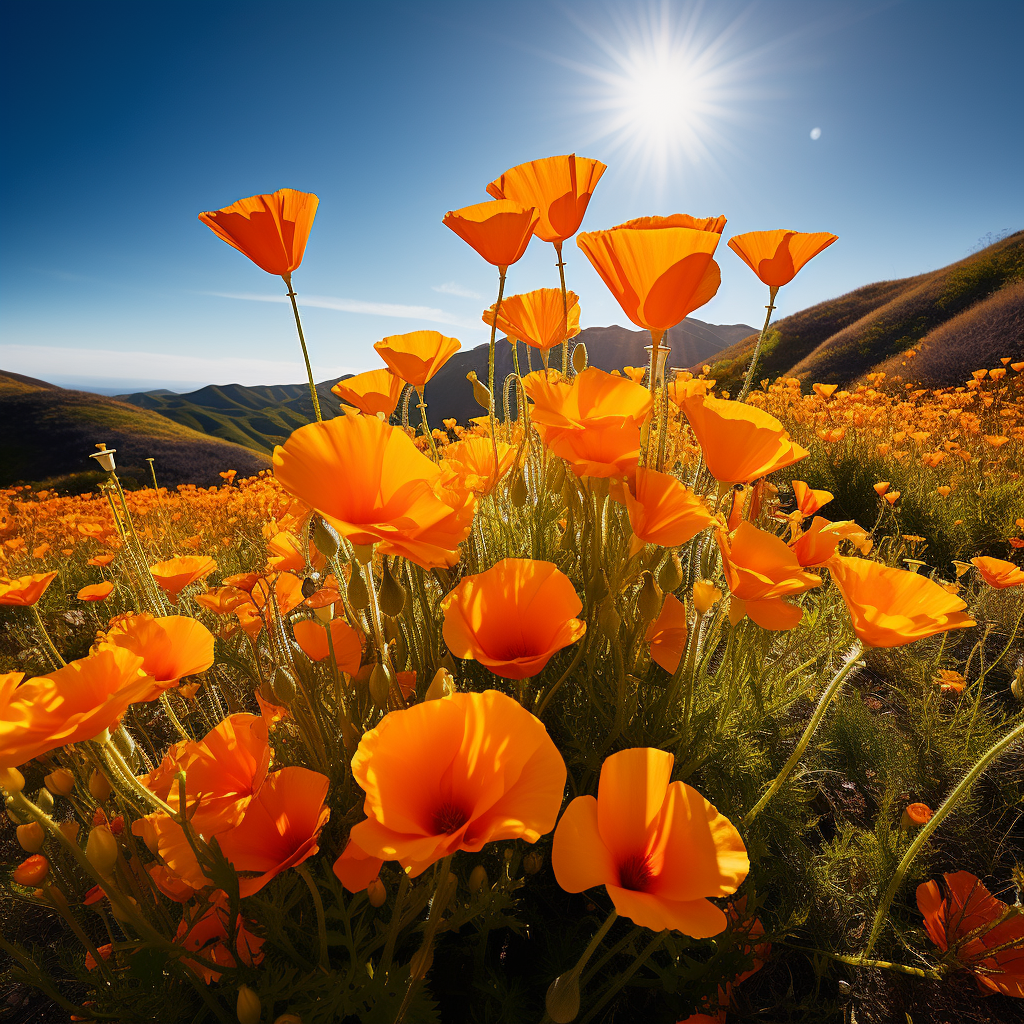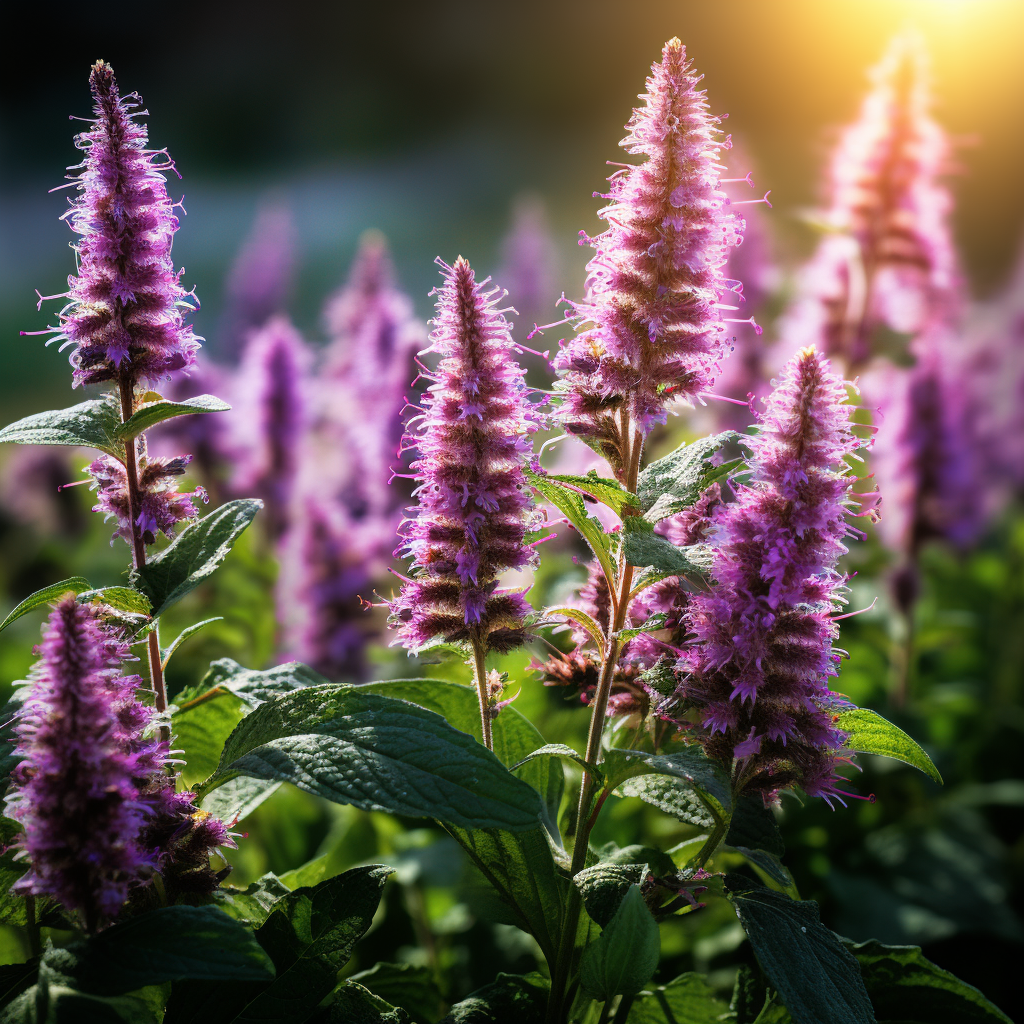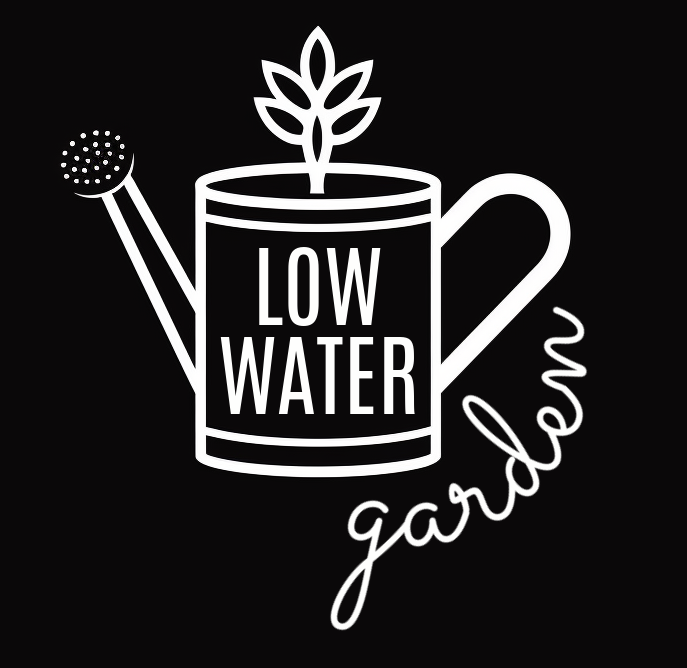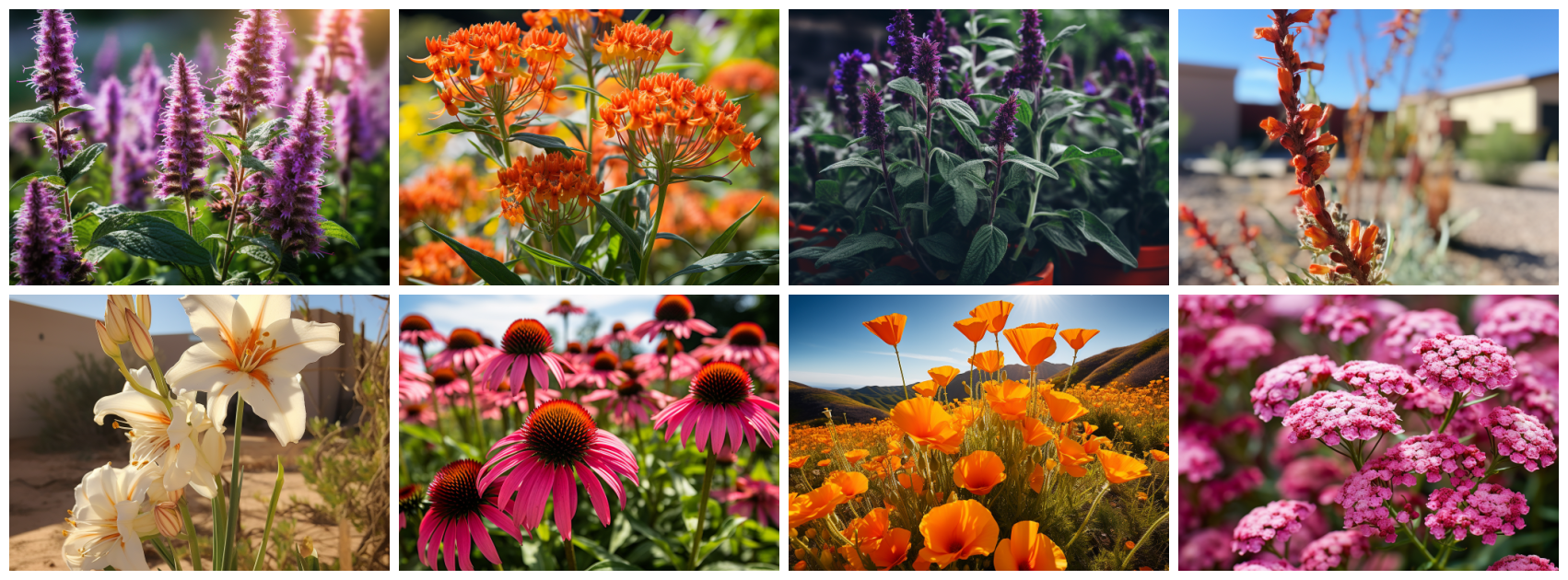If you live in Zone 9b, you know that droughts are a common occurrence — but that doesn’t mean you have to give up on having a beautiful and colorful yard. There are plenty of drought-tolerant plants that will thrive in your garden, even during the driest months.
Below you’ll find 10 of our favorite drought-tolerant plants for a Zone 9b low water garden. These plants are all easy to care for, and they offer a variety of colors, textures, and shapes to add interest to your yard.
10 Drought-Tolerant Plants for Your Low Water Garden
1. California poppy

The California poppy is a beautiful and easy-to-grow wildflower that is native to… you guessed it, California (in fact, it is the Golden State’s official state flower). Poppies are known for their trademark bright orange flowers that bloom in the spring and summer. They can be grown in a variety of climates, but they do best in warm, sunny areas with well-draining soil. California poppies are easy to grow, and they require very little water.
Some quick facts about the California poppy:
- It’s an annual that can be reseeded in the fall.
- Typically blooms in the spring and summer, but can bloom as early as February and as late as October.
- The plant often has bright orange flowers, but can also be yellow, pink, or white.
- Poppies are a favorite of pollinators, such as bees and butterflies.
- A popular choice for wildflower gardens, and they can also be grown in pots or containers.
2. Lantana

Lantana is a colorful shrub that is native to tropical America. It has clusters of small, brightly colored flowers that bloom all summer long. Lantana is easy to care for and it can tolerate a wide range of temperatures, making it an attractive plant for Zone 9b.
Some quick facts about the lantana plant:
- There are over 150 species of lantana, native to tropical and subtropical regions of the Americas, Africa, and Asia.
- Lantana plants are known for their brightly colored flowers, which can be yellow, orange, red, pink, purple, and/or white.
- Lantana flowers are typically arranged in clusters, and they can bloom all year round in warm climates.
- Lantana plants are also deer-resistant, making them a good choice for gardens where deer are a problem.
- Lantana plants are attractive to butterflies and other pollinators.
- Lantana plants can be invasive in some areas, so it is important to check with your local nursery or garden center before planting them.
3. Hummingbird mint

Agastache, also known as anise hyssop or hummingbird mint, is a beautiful and easy-to-grow herbaceous perennial that is native to North America. It is known for its long spikes of purple, pink, or white flowers that bloom in the summer. Agastache is a great choice for attracting pollinators to your garden.
Some quick facts about agastache:
- Flowers are typically about 1-2 inches long and are arranged in clusters
- Agastache are attractive to butterflies and other pollinators and resistant to deer.
- Are sometimes called “hyssop” or “giant hyssop”, but they are not closely related to true hyssop (Hyssopus officinalis).
- The plant is in the mint family.
4. Yarrow

Yarrow is a hardy perennial plant that is native to Europe, Asia, and North America. It is known for its clusters of daisy-like flowers that bloom in the summer. Yarrow has been used medicinally for centuries to treat a variety of ailments, including wounds, bruises, and fevers. In addition to its medicinal properties, yarrow is also a beautiful and versatile ornamental plant. It can be grown in a variety of settings, including gardens, meadows, and borders. Yarrow is also a good choice for cut flowers, as it will last for several days in a vase.
Some quick facts about yarrow:
- Yarrow is also known as “woundwort” and “soldier’s woundwort,” due to its traditional use in treating wounds.
- Yarrow is a member of the daisy family, Asteraceae.
- Yarrow is a hardy plant that can tolerate a wide range of conditions, including poor soil and drought.
- Yarrow is a deer-resistant plant.
5. Salvia

Salvia is a genus of flowering plants that includes many drought-tolerant species. Salvias have spikes of brightly colored flowers that bloom in the summer. They are a great choice for attracting pollinators to your yard.
Some quick facts about salvia:
- There are over 900 (!) species of salvia, native to tropical and subtropical regions of the world.
- Salvia plants are known for their brightly colored flowers, which can be blue, purple, red, pink, or white.
- Salvia flowers are typically arranged in spikes or racemes, and they can bloom all summer long.
- Salvia plants are easy to care for and can be grown in a variety of conditions.
- Salvia plants are attractive to butterflies and other pollinators and resistant to deer.
- Some species of salvia, such as Salvia officinalis (sage), are used for culinary and medicinal purposes.
6. Lavender

Lavender is a fragrant herb that is native to the Mediterranean region. It has spikes of purple flowers that bloom in the summer. Lavender is easy to grow, and it requires very little water.
Some quick facts about lavender:
- There are over 40 species of lavender, native to the Mediterranean region.
- Lavender plants are known for their aromatic flowers, which can be blue, purple, or white.
- Lavender flowers are typically arranged in spikes, and they bloom in the summer.
- Lavender plants are attractive to bees and butterflies and are deer-resistant.
- Lavender essential oil is extracted from the flowers and is used for a variety of purposes, including aromatherapy, cosmetics, and herbal medicine; it’s a popular choice for potpourris and sachets.
- The name “lavender” comes from the Latin word “lavare”, meaning “to wash”.
- Lavender was used by the ancient Greeks and Romans to bathe and scent their clothes.
7. Coneflower

The coneflower, or echinacea, is a flowering plant that is native to North America. It has cone-shaped flowers that bloom in the summer. Echinacea is a great choice for attracting pollinators to your yard.
Some quick facts about coneflowers:
- There are nine species of echinacea, native to North America.
- Echinacea plants are known for their cone-shaped flowers (hence the name!), which can be red, pink, purple, or white.
- Echinacea flowers are typically arranged in clusters, and they bloom in the summer.
- Echinacea plants are attractive to bees and butterflies, and deer-resistant.
- Echinacea is a popular choice for medicinal purposes.
- The root of the echinacea plant has been used for centuries to treat a variety of ailments, including colds, flu, and infections.
- Echinacea is also used to boost the immune system.
- The name “echinacea” comes from the Greek word “echinos,” meaning “hedgehog” or “sea urchin,” referring to the plant’s cone-shaped flowers.
8. Butterfly weed

Butterfly weed is a native wildflower that is a magnet for butterflies. It has bright orange flowers that bloom in the summer. Butterfly weed is easy to grow, and it requires very little water.
Some quick facts about butterfly weed:
- Butterfly weed can be found in a variety of habitats, including meadows, prairies, and roadsides.
- Butterfly weed is a member of the milkweed family, which means that it contains a milky sap that is poisonous to some animals. However, the sap is not harmful to humans or butterflies.
- Butterfly weed is a valuable addition to any garden, as it provides food and habitat for butterflies. It is also a beautiful plant that can add a touch of color to any landscape.
- Butterfly weed is a beautiful plant that can add a touch of color to any landscape.
9. Desert lily

The desert lily is a drought-tolerant bulb that is native to the southwestern United States. It has white or yellow flowers that bloom in the spring. Desert lilies are easy to grow, and they can tolerate a wide range of conditions — they can be found in a variety of habitats, including deserts, grasslands, and mountains.
Some quick facts about desert lilies:
- The desert lily can grow up to 3 feet tall and has long, sword-shaped leaves. The flowers are trumpet-shaped and can be up to 6 inches wide. They have a sweet fragrance and are attractive to butterflies and other pollinators.
- Desert lily is a popular choice for xeriscaping and can be grown in containers or in the ground. It is a beautiful and low-maintenance plant that can add a touch of elegance to any landscape.
- Desert lily is also known as “ajo lily” because the bulb of the plant has a garlicky odor.
10. Ocotillo

Ocotillo is a shrub that is native to the southwestern United States. It has long, spiny stems that are topped with clusters of orange flowers in the spring. Ocotillo is easy to grow, and it can tolerate a wide range of conditions — which is why it can be found in a variety of habitats, including deserts, grasslands, and mountains.
Some quick facts about ocotillo:
- Ocotillo can grow up to 20 feet tall and has a branching, shrubby growth habit. The stems are green and succulent when it rains, but they become dry and spiny during the dry season. The flowers are trumpet-shaped and can be up to 2 inches long. They have a sweet fragrance and are attractive to butterflies and other pollinators.
- Ocotillo is a popular choice for xeriscaping and can be grown in containers or in the ground. It is a beautiful and low-maintenance plant that can add a touch of the desert to any landscape.
- The name “ocotillo” comes from the Nahuatl word “ocotl”, which means “torch.”
- The stems of ocotillo can store water for long periods of time, which allows the plant to survive in the desert.
These are just a few of the many drought-tolerant plants that will thrive in your Zone 9b low water garden. With a little planning, you can create a beautiful and sustainable landscape that will require very little water.
The following growing tips generally apply to the aforementioned plants:
- When choosing drought-tolerant plants for your garden, it is important to consider the amount of sunlight your yard receives. Most drought-tolerant plants need full sun, but there are some that can tolerate partial shade.
- Most of these plants are relatively drought-tolerant plant, but it will do best if you water it regularly during the summer months. Water deeply, but allow the soil to dry out between waterings. Lantana does not like wet feet, so be careful not to overwater it.
- It is also important to consider the soil type in your yard. Drought-tolerant plants typically prefer well-draining soil and you may need to amend your soil (especially compacted soil like clay) to avoid your plants getting wet feet. Here’s a great guide for amending your soil for low water garden plants.
- Once you have chosen your plants, be sure to plant them in the right location and space them accordingly.
- With proper care, your drought-tolerant plants will thrive for many years to come.
Have an idea for content? Get in touch, we’d love to chat.

